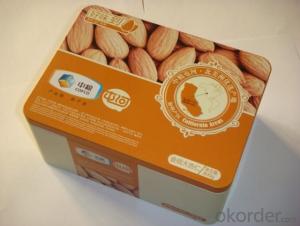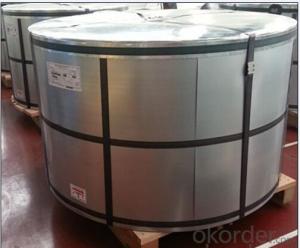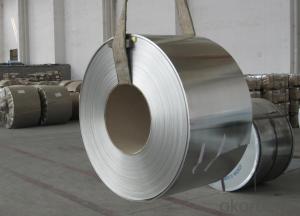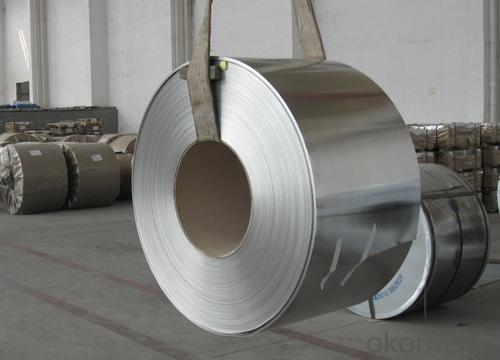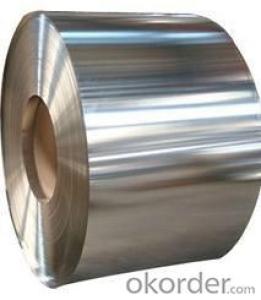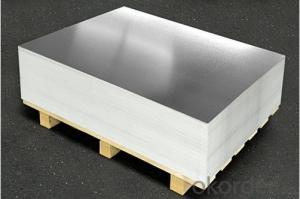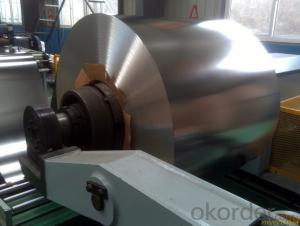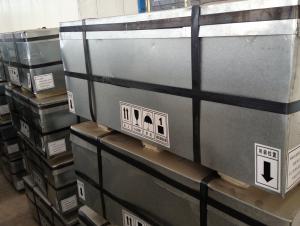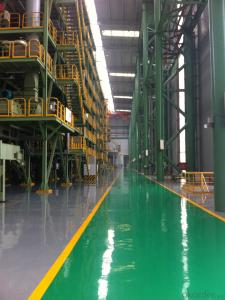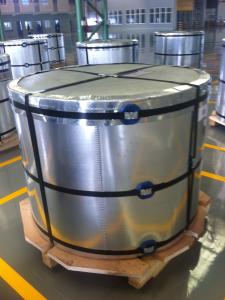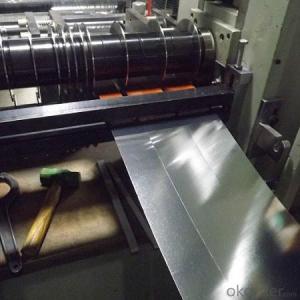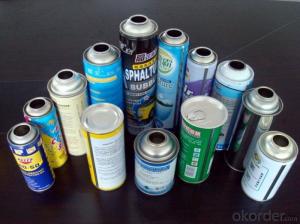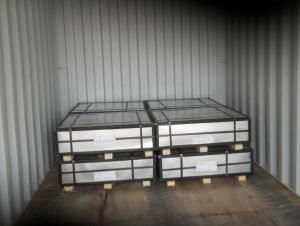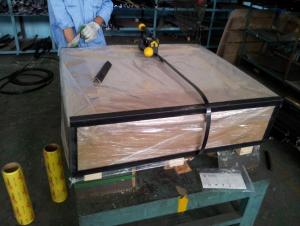Top Quality Tinplate for Metal Can Making, DR Temper
- Loading Port:
- Tianjin
- Payment Terms:
- TT or LC
- Min Order Qty:
- 25 m.t.
- Supply Capability:
- 50000 m.t./month
OKorder Service Pledge
OKorder Financial Service
You Might Also Like
1.Usage
Tinplate is widely used for making all types of containers, containing industrial usage such as paint can, oil can, aerosol cans etc., and food cans like milk powder cans, tomato paste can, dry food cans etc.
2. Quality
As a state owned company and a large tinplate supplier in China, our tinplate quality ranks 1st level in China, similar to Bao Steel, Posco etc.
3. Specification
standard: GB/T2520, JIS G3303, DIN EN10202
Material: MR /SPCC
Thickness available: 0.16-0.50MM
Width available: 600~1050MM
Temper grade: T1 – DR8
Tin coating: ordinary 2.8g/2.8g, 5.6g/5.6g and others
Package: sea worthy export package.
Applications: Tin can for chemicals & paint cans, industrial cans, food cans
4.our production equipments

5. Our export market
now our tinplate has been sold to more than 30 countries, including Europe countries, Gulf Area, South American, South Afric etc.
6. Our overseas markets:
Furthermore, in the year 2014, we have more than 10 overseas warehouses all over the word, located in KSA, UAE, Oman, Russia, Kuwait, Qatar, Oman, Chile, Brazil etc.
7. FAQ
a. what's the annual output?
about 500,000 tons per year.
b. where's the raw matrial from?
our hot rolled coil is purchased from Capital Steel and other state owned mill, with quite good quality.
c. how long is the delivery time?
normally for SPCC about 45~55 days, while 65~75 days for MR material
d. how to control the quality during production process?
inside our workshop, we have MES syestem. It realizes the optimization of the production procedure in the workshop. It could record each step of the whole production procedures, and if some problem appears, factory could easily found and take action, it’s quite helpful to monitor and control the quality.
- Q: What are the main applications of tinplate in the textile industry?
- Tinplate is commonly used in the textile industry for applications such as canning and packaging of textile products. It provides a protective and decorative coating that enhances the visual appeal and durability of the packaging materials. Additionally, tinplate is also utilized for manufacturing sewing machine needles and other textile machinery components, as it offers excellent corrosion resistance and strength properties.
- Q: How does tinplate affect the taste and quality of food?
- Tinplate has a minimal effect on the taste and quality of food. It acts as a protective barrier, preventing the food from coming into direct contact with the metal. This ensures that the taste and quality of the food remain unaffected by any potential reactions with the tinplate.
- Q: How is tinplate coated with tin?
- Tinplate is coated with tin through a process called electrolytic tinning. In this process, the tinplate is immersed in an electrolyte bath containing tin salts. An electric current is then passed through the bath, causing the tin ions to be attracted to the steel surface of the tinplate. As a result, a thin layer of tin is deposited onto the steel, providing it with corrosion resistance and enhanced appearance.
- Q: Can tinplate be used for industrial containers?
- Yes, tinplate can be used for industrial containers. Tinplate is a type of steel sheet coated with a thin layer of tin, which provides corrosion resistance and durability. It is commonly used for manufacturing various types of containers, including those used in the food and beverage industry, aerosol cans, and paint cans.
- Q: How does tinplate contribute to the overall sustainability of the supply chain?
- Tinplate contributes to the overall sustainability of the supply chain in several ways. Firstly, it is a recyclable material, meaning that it can be reused multiple times without losing its properties. This reduces the need for virgin resources and minimizes waste generation. Secondly, tinplate has excellent barrier properties, protecting products from moisture, light, and oxygen, thereby extending their shelf life and reducing food waste. Additionally, tinplate is lightweight, making it more energy-efficient to transport compared to alternative packaging materials. Finally, tinplate is highly durable, ensuring that products remain intact during transit, reducing the risk of damage or spoilage. Overall, the use of tinplate in the supply chain promotes resource efficiency, waste reduction, and improved product preservation, contributing to a more sustainable and environmentally-friendly approach.
- Q: How is tinplate stored?
- Tinplate is typically stored in a dry, well-ventilated area to prevent moisture and humidity from causing corrosion. It is advisable to stack the tinplate sheets or rolls on pallets or shelves, ensuring they are kept away from direct contact with the ground to avoid damage. Additionally, it is important to protect the tinplate from any potential sources of scratching or denting during storage.
- Q: What are the limitations of using tinplate?
- There are several limitations to using tinplate. Firstly, it is relatively expensive compared to other packaging materials such as aluminum or plastic. Secondly, tinplate is not as lightweight as some alternative materials, which can add to transportation costs and increase carbon footprint. Additionally, tinplate is susceptible to corrosion and can rust if not properly coated or maintained. Lastly, its use is limited to certain applications, and it may not be suitable for products that require high heat or pressure resistance.
- Q: What are the different methods of labeling and branding on tinplate packaging?
- There are several methods of labeling and branding on tinplate packaging, including lithography, embossing, printing, and metal etching. Lithography is a popular method that involves applying ink onto the tinplate through a printing process. Embossing creates raised or recessed designs on the surface of the tinplate, adding texture and visual appeal. Printing involves directly printing the design onto the tinplate using various techniques such as screen printing or digital printing. Metal etching is another method where the design is chemically etched onto the tinplate, resulting in a durable and long-lasting branding.
- Q: How does tinplate perform in terms of heat transfer?
- Tinplate performs poorly in terms of heat transfer due to its low thermal conductivity.
- Q: Can tinplate be used for petrochemical packaging?
- Yes, tinplate can be used for petrochemical packaging. Tinplate is a type of steel coated with a layer of tin, which provides excellent corrosion resistance and protection against chemical reactions. This makes it suitable for storing and transporting petrochemical products safely.
Send your message to us
Top Quality Tinplate for Metal Can Making, DR Temper
- Loading Port:
- Tianjin
- Payment Terms:
- TT or LC
- Min Order Qty:
- 25 m.t.
- Supply Capability:
- 50000 m.t./month
OKorder Service Pledge
OKorder Financial Service
Similar products
Hot products
Hot Searches
Related keywords
